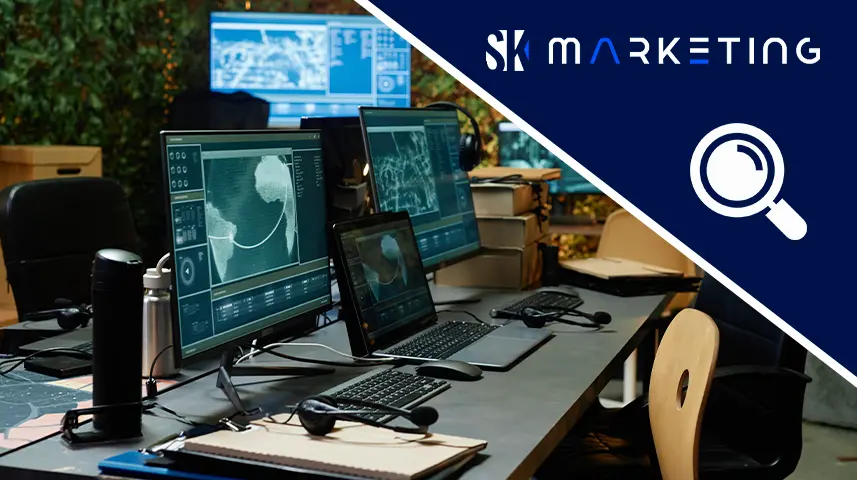
The digital environment is a constantly evolving battlefield where attacks are becoming increasingly sophisticated, and threats are more unpredictable than ever. Website security is not just a technical aspect but a strategic necessity that determines business stability. Security monitoring not only detects vulnerabilities but also prevents their exploitation by malicious actors. This proactive protection must be integrated into every stage of a website’s lifecycle—from development to daily operation. High-quality website maintenance plays a crucial role in this process, ensuring timely updates, backups, and protection against external threats. Without proper control, even the most robust architecture can become a vulnerable target for attacks.
"Website security is not a destination but a continuous process. If you are not monitoring threats, someone else is doing it for you." — Sergey Kozlov
Why Is Security Monitoring Important?
Monitoring the activity of a web resource allows for the quick detection of suspicious actions, such as password brute-force attempts, mass requests, or the injection of malicious code. Hackers are constantly searching for vulnerabilities, and without proper control, they can exploit weak spots in the system.
Web resources often store confidential information, including passwords, payment data, and users' personal details. A data breach can lead to serious financial and legal consequences. Continuous monitoring helps minimize risks and prevent data leaks.
The presence of malicious scripts can not only disrupt the functionality of a website but also result in its blacklisting by search engines. Regular checks help identify and remove harmful programs in a timely manner, ensuring user safety and maintaining search engine rankings.
Attacks aimed at server overload, such as DDoS, can completely disable a website, reducing its accessibility to users. Monitoring helps respond promptly to such threats, block suspicious requests, and ensure the uninterrupted operation of the resource.
Key Security Monitoring Methods
1. Automated Monitoring Systems
Modern tools allow real-time tracking of suspicious activity, checking file integrity, and scanning for vulnerabilities. Some popular solutions include:
-
Web Application Firewall (WAF);
-
Antivirus scanners (e.g., Sucuri, MalCare);
-
Intrusion Detection Systems (IDS/IPS);
-
Blacklist monitoring (Google Safe Browsing, Spamhaus);
-
Automated alerts for file or configuration changes.
2. Manual Security Audits
Periodic code reviews, server configurations, and installed plugins include vulnerability analysis, compliance checks with best security practices, and detection of unauthorized changes. Security audits involve testing protection against malicious code injection, analyzing encryption levels of transmitted data, and assessing the effectiveness of security policies. Monitoring access to configuration files and backups is also crucial, as they can become attack targets.
3. Logging and Event Analysis
Regular analysis of server and database logs helps detect abnormal activity, such as multiple login attempts, port scanning, or malware injection. Configuring automatic alerts for suspicious actions enables rapid threat response. Log analysis also identifies slow, persistent attacks aimed at gradually compromising accounts or exploiting vulnerabilities.
4. Software Updates
Outdated CMS platforms, plugins, and scripts are prime targets for hackers. Regular updates help eliminate known vulnerabilities and improve security levels. It is crucial not only to install updates promptly but also to test them for compatibility with the existing infrastructure to prevent website failures.
Practical Security Monitoring Recommendations
-
Enable two-factor authentication for administrators.
-
Use an SSL certificate to protect transmitted data.
-
Regularly create backups and store them securely.
-
Restrict admin panel access by IP addresses.
-
Configure alerts for suspicious activities (e.g., brute-force login attempts).
-
Periodically scan for vulnerabilities using professional security scanners.
-
Implement the principle of least privilege for users and employees.
When creating a website, security should be considered from the very beginning. Protection should start at the development stage, including the selection of reliable technologies, secure coding practices, and penetration testing. This is particularly important when developing complex solutions like corporate website development and e-commerce development, where protecting user data is critical.
Security monitoring is not a one-time action but an ongoing process that requires attention and a comprehensive approach. Using automated tools, conducting regular audits, and keeping software updated will help protect a website from attacks and ensure its uninterrupted operation. If you lack an in-house IT department, it is advisable to seek professional services to implement an effective security and monitoring system for your web resource.


 Sergey Kozlov
Sergey Kozlov